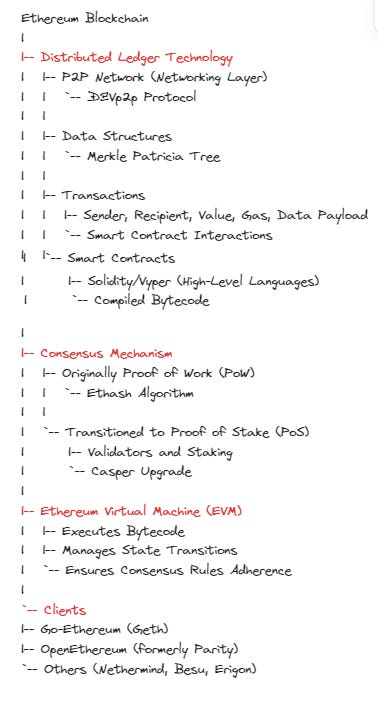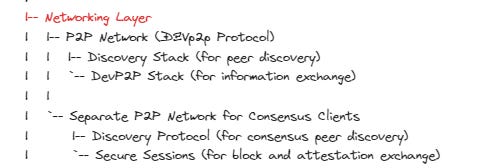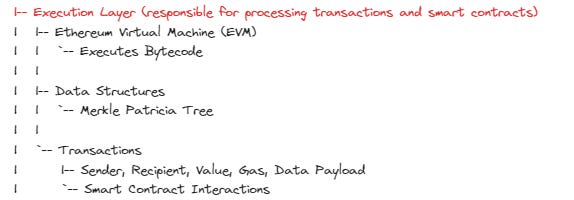Understanding Ethereum : Ethereum Blockchain and It's Components (Ethereum 101)
Understanding Ethereum : Ethereum Blockchain and It's Components (Ethereum 101) Ethereum is an open source, globally decentralized computing infrastructure that executes programs called smart contract
Introduction:
Ethereum is an open source, globally decentralized computing infrastructure that executes programs called smart contracts. It uses a Blockchain to synchronize and store the system’s state changes, along with a crypto‐ currency called ether and constrain execution resource costs.1
Blockchain:
We need to understand what the blockchain is and how the blockchain is working.. Blockchain is a shared, immutable ledger that facilitates the process of recording transactions and tracking assets in a public/private network. Blockchain is ideal for delivering that information because it provides immediate, shared and completely transparent information stored on an immutable ledger. A Blockchain network can track orders, payments, accounts, production and much more.2
Ethereum Blockchain:
The image is a simplified and high-level overview of the Ethereum blockchain's components. This is also the hierarchical conceptualization of the Ethereum blockchain's parts.
The Ethereum blockchain can be conceptualized with distinct layers, each with its own role and purpose in the functioning of the network.

In this hierarchical structure, the networking layer provides the foundation for node communication and discovery, both for the execution layer and the consensus layer. The execution layer includes the EVM and is responsible for the actual processing and execution of transactions and smart contracts. The consensus layer is where the agreement on the state of the blockchain and the validation of blocks occur, which has shifted from PoW to PoS with the Casper upgrade. Finally, the clients are the software implementations that operate on these layers, allowing users to interact with the network.
Networking Layer
The Networking Layer of the Ethereum blockchain consists of the infrastructure that enables nodes within the network to discover each other and communicate effectively, ensuring that the network is decentralized and resilient.
P2P Network (ÐΞVp2p Protocol):
Discovery Stack: This is the set of protocols that allows nodes to find each other on the network. New nodes use this to locate peers and establish connections, ensuring they become part of the network.
DevP2P Stack: Once nodes have discovered each other, the DevP2P stack is responsible for the exchange of blockchain information. This includes sending and receiving transactions, block data, and other relevant messages needed for the nodes to stay synchronized with the blockchain state.
Separate P2P Network for Consensus Clients:
Discovery Protocol: In the Proof of Stake (PoS) model, consensus clients also have their own discovery protocols to find and connect with other consensus nodes, which are essential for validating and proposing new blocks.
Secure Sessions: After discovery, these clients establish secure communication sessions to exchange critical consensus data like blocks and attestations (which are validations of blocks by other validators), ensuring the integrity and security of the consensus process.
This networking layer is fundamental for the decentralized operation of the Ethereum blockchain, allowing it to function without a central coordinating server.
The Execution Layer
The Execution Layer is the component of the Ethereum blockchain that processes all the transactions and smart contracts:
Ethereum Virtual Machine (EVM)
A computation engine that acts as a decentralized computer, executing code called bytecode. Every Ethereum node runs an EVM implementation, allowing them to agree on executing the same instructions.
Data Structures
Merkle Patricia Tree: A complex data structure used to encode the blockchain state in a secure and efficient manner. It facilitates the quick verification of account balances, transaction existence, and smart contract states.
Transactions:
Components: Each transaction includes a sender, recipient, the amount of Ether to transfer (value), a gas limit (fee for computation), and a data payload (which may include smart contract code or function calls).
Smart Contract Interactions: Transactions can interact with smart contracts—self-executing contracts with the terms of the agreement directly written into code, allowing for automatic and trustless executions of agreements.
The Consensus Layer
The Consensus Layer is responsible for achieving agreement across the network on the current state of the Ethereum blockchain:
Originally Proof of Work (PoW):
Ethash Algorithm: Initially, Ethereum used a PoW consensus mechanism where miners would solve complex mathematical problems using computational power to validate transactions and create new blocks.
Transitioned to Proof of Stake (PoS):
Validators and Staking: In PoS, validators take the place of miners. They are chosen to create new blocks and validate transactions based on the amount of cryptocurrency they hold and are willing to "stake" as collateral.
Casper Upgrade: This is the name given to Ethereum's upgrade to PoS, aiming to reduce energy consumption and increase transaction processing capabilities. It's part of Ethereum's move to a more scalable and sustainable framework, also known as Ethereum 2.0.
Clients
The Ethereum blockchain uses specialized software known as clients that allow users to interact with the network. These clients fall into two categories, reflecting the bifurcation of responsibilities within the Ethereum ecosystem:
Execution Clients:
These clients are responsible for processing transactions, executing smart contract code, and maintaining the current state of the blockchain.
They run the Ethereum Virtual Machine (EVM) and apply the rules defined by the Ethereum protocol.
Examples include Go-Ethereum (Geth) and OpenEthereum (formerly known as Parity Ethereum).
Consensus Clients:
With Ethereum's transition to Proof of Stake (PoS), consensus clients specifically manage the consensus protocol.
They are responsible for proposing new blocks and attesting to existing blocks, effectively working to secure the network through staking.
Consensus clients work in tandem with execution clients but are focused on the PoS mechanism, validating transactions and blocks through a network of validators rather than miners.
Both types of clients are essential for the Ethereum network's operation, ensuring that all transactions and blocks are processed and validated correctly according to the consensus rules.
You can also check the following page for more information on two layers.
Engin YILMAZ (
Understanding Ethereum : Ethereum Virtual Machine (Ethereum 101)
Welcome to our "Understanding Ethereum" where we delve into the foundational technologies and concepts behind Ethereum. In this installment, titled "Ethereum Virtual Machine (EVM) - Ethereum 101" we aim to demystify the core engine that powers the Ethereum network.









